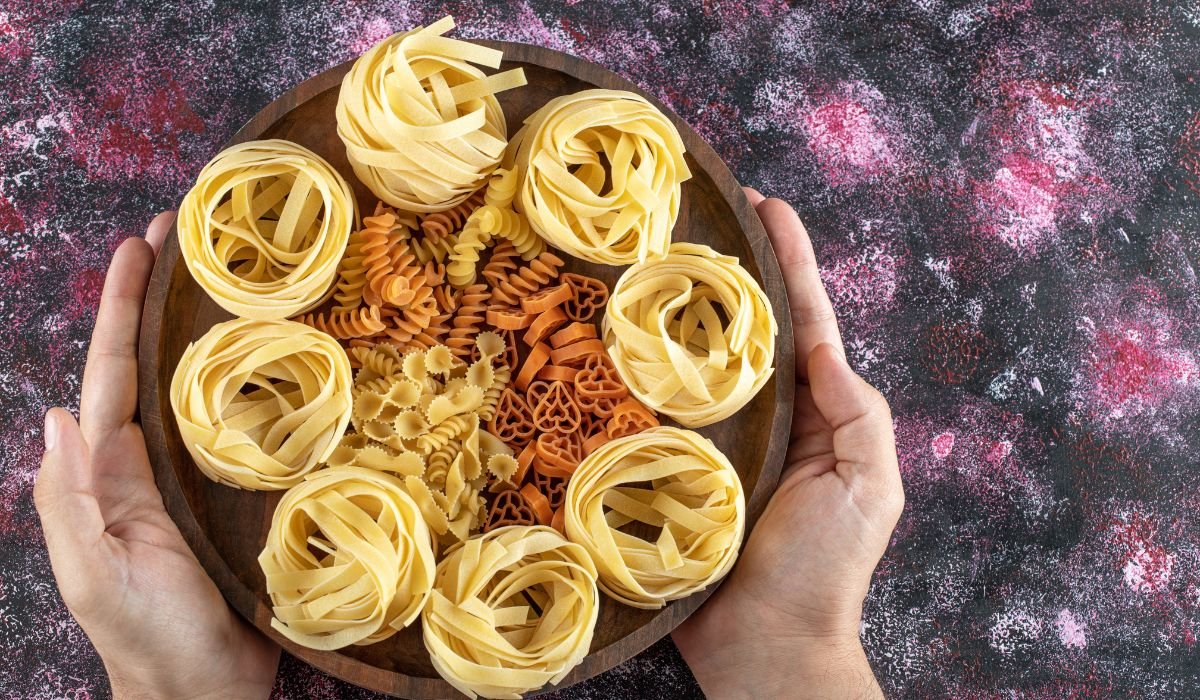Assume this: Sunday afternoons filled with laughter, flour-dusted countertops, and the satisfying snap of handmade tortellini emerging from your own kitchen. Sounds idyllic, right? But let’s be honest, shaping hundreds of those delicate little pasta parcels by hand? It’s a labour of love that often turns into a test of patience. What if you could capture that authentic, homemade magic without the hours of meticulous folding? Enter the unsung hero of ambitious home cooks and pasta pros alike: the tortellinatrice. This ingenious machine isn’t just a gadget; it’s your passport to consistent, beautiful, restaurant-quality tortellini anytime the craving strikes, cutting production time from hours to mere minutes. Ready to revolutionize your pasta game?
What Exactly is a Tortellinatrice? Demystifying the Magic
Simply put, a tortellinatrice is a specialized kitchen appliance designed to automate the process of forming tortellini. Think of it as a tiny, highly focused pasta factory for your countertop. While stand mixers with pasta attachments handle sheets or strands, the tortellinatrice has one dedicated mission: transforming perfectly rolled pasta sheets and dollops of delicious filling into perfectly shaped, uniform tortellini.
How Does This Culinary Wizardry Work?
The process is surprisingly straightforward, mimicking the traditional hand method but with mechanical precision:
- Sheet Load: You feed a thin sheet of fresh pasta dough (made from scratch or pre-rolled) into the machine.
- Filling Fun: A reservoir or hopper holds your chosen filling (ricotta & spinach, prosciutto & cheese, pumpkin… the possibilities are endless!). As the sheet advances, precise dollops of filling are deposited at regular intervals.
- The Fold & Seal: This is where the magic happens! Internal mechanisms gently fold the pasta sheet over the filling and then expertly crimp and seal the edges, creating that iconic tortellini ring or hat shape. Some models might require a gentle nudge or a specific attachment change for different shapes.
- The Grand Exit: Your perfectly formed tortellini emerge, ready for a quick dusting of flour and either immediate cooking, freezing, or drying.
Tortellinatrice vs. The Alternatives: Why It Shines
| Feature | Handmade Tortellini | Standard Pasta Maker (Sheet/Roller) | Tortellinatrice |
| Speed | Very Slow (Hours) | Medium (Sheets only) | Fast (Minutes) |
| Consistency | Variable (Skill) | Consistent Sheets | Highly Consistent Shapes |
| Ease of Use | High Skill Required | Moderate Skill | Relatively Simple |
| Output Volume | Low | Medium (Sheets) | High |
| Specialization | N/A | General Pasta | Tortellini Focused |
Why Your Kitchen Craves a Tortellinatrice: Benefits Beyond Speed
Sure, the speed is incredible, but the benefits of welcoming a tortellinatrice into your culinary arsenal go much deeper:
- Unbeatable Consistency, Every Single Time: Forget lopsided or bursting tortellini. The machine delivers uniform size and shape, ensuring even cooking and a professional presentation that will wow guests. Each piece is a carbon copy of deliciousness.
- Mass Production Made Easy: Hosting a big family dinner? Planning a freezer stash for easy weeknight meals? The tortellinatrice handles large batches effortlessly. What might take a skilled nonna all afternoon is done before your sauce even simmers.
- Preserve the Artisanal Soul: Crucially, it doesn’t replace the heart of homemade pasta. You still control the most important parts: crafting your perfect pasta dough (using that “00” flour for silkiness!) and dreaming up your signature fillings. The machine simply handles the repetitive shaping, freeing you to focus on flavour creativity.
- Reduce the Frustration Factor: Let’s face it, intricate hand-shaping can be fiddly and tiring, especially for beginners. The tortellinatrice removes that barrier, making authentic tortellini accessible to passionate cooks of all skill levels. It turns potential frustration into pure culinary joy.
- Endless Culinary Exploration: Once you master the basics, the world is your oyster (or tortellino!). Experiment with different doughs (spinach-infused, squid ink black, whole wheat), an infinite array of fillings (mushroom & truffle, lobster & mascarpone, vegan lentil & walnut), and even different shapes if your model supports attachments (like cappelletti or agnolotti).
Read also: Eating Habits for a Healthier You
Choosing Your Perfect Pasta Partner: What to Look For
Not all tortellinatrici are created equal. Here’s what savvy buyers consider:
- Durability is King (or Queen!): This machine works with dough – it needs solid construction. Look for robust materials like stainless steel components and a stable base. Brands like Marcato and Arcobaleno are renowned for their build quality that lasts generations.
- Attachment Versatility: While tortellini is the star, many machines come with additional plates or kits to make other stuffed shapes like ravioli (square or round), cappelletti, or even mezzelune. If you love variety, this is key. The Philips Pasta Maker Avance series, for example, offers specific discs for different shapes.
- Ease of Cleaning: Pasta dough dries like cement! Prioritize models with parts that disassemble easily for quick rinsing or are dishwasher safe. Complicated nooks and crannies are the enemy post-pasta-party.
- Filling Mechanism: Understand how the filling is loaded and dispensed. Some have simple hoppers you spoon filling into, while others might use a piston or syringe system for more precise control. Consider what feels most intuitive for you.
- Size & Storage: These aren’t tiny appliances. Measure your counter and cupboard space realistically. Some models are surprisingly compact (like certain Imperia attachments), while others are more substantial countertop fixtures.
Mastering Your Machine: Tips for Tortellinatrice Triumph
Got your machine? Fantastic! Here’s how to ensure pasta perfection from the get-go:
- Dough is Everything: This cannot be overstated. Your dough needs to be the perfect texture – smooth, elastic, and slightly firmer than dough for fettuccine. It should be thin enough to fold easily but strong enough not to tear. Aim for sheets rolled to around setting #6 or #7 on a standard pasta roller (about 1mm thick). Let it rest adequately covered.
- Filling Feng Shui: Your filling must be smooth, cohesive, and not too wet. Excess moisture is the enemy of good seals. Drain ricotta thoroughly, squeeze cooked spinach dry, avoid overly watery sauces in the mix. A thicker, paste-like consistency works best. Think ricotta, not soup!
- Flour Power (But Not Too Much!): Lightly flour your pasta sheets and the machine’s surfaces to prevent sticking, but avoid over-flouring as it can dry out the dough and interfere with sealing. A fine mist of water on the sealing edge can sometimes help if you’re having issues (check your manual first).
- Test Drive: Before committing a whole sheet, do a short test run. Check the filling amount (adjust if needed) and ensure the seals are tight. Cook a couple of test tortellini to confirm your dough thickness and filling consistency are spot-on.
- Gentle Handling: As your beautiful tortellini emerge, place them gently on a well-floured surface or tray, ensuring they aren’t touching. Handle them delicately until they are cooked or frozen solid.
Busting the Myths: Separating Tortellinatrice Fact from Fiction
- Myth: “It makes pasta taste industrial.”
- Reality: Nonsense! The taste comes 100% from your dough and your filling. The machine only shapes it. If you use high-quality ingredients, it will taste gloriously homemade.
- Myth: “It’s only for professional kitchens or hardcore enthusiasts.”
- Reality: While pros love them for efficiency, modern home models are designed for accessibility. If you enjoy making pasta occasionally and love tortellini, it’s a worthwhile investment that pays off in saved time and enjoyment.
- Myth: “Cleaning is a nightmare.”
- Reality: While cleaning is necessary (it’s pasta, after all!), most well-designed models have parts that disassemble quickly. Rinsing immediately after use before dough dries makes it a breeze. Many parts are often dishwasher safe.
- Myth: “It can’t handle my grandma’s delicate dough recipe.”
- Reality: It absolutely can, as long as the dough is rolled to the correct, consistent thickness and has the right texture (firm and elastic). It might just automate the part grandma found most tedious!
Your Homemade Pasta Revolution Starts Now
The tortellinatrice is more than just a convenient appliance; it’s an enabler of culinary dreams. It removes the single biggest hurdle to enjoying truly exceptional, homemade tortellini whenever the mood strikes. Imagine:
- Weeknight Wonder: Fresh tortellini in brodo (broth) on a chilly Tuesday? Done in less time than ordering pizza.
- Dinner Party Delight: Serving dozens of perfect, delicate tortellini stuffed with luxurious fillings, earning gasps of admiration (and requests for seconds!).
- Freezer Gold: Building a stash of your signature tortellini for effortless, impressive meals months down the line.
- Creative Playground: Experimenting with flavours and shapes without the time penalty of hand-folding.
5 Tips to Launch Your Tortellinatrice Journey Today:
- Start Simple: Master a basic egg dough and a classic cheese filling before diving into complex flavours.
- Read the Manual: Seriously! Every machine has its quirks. Know how to assemble, adjust, and clean yours properly.
- Prep is Paramount: Have your dough rested and rolled, your filling perfectly textured, your workspace floured, and a landing tray ready before you start the machine.
- Embrace the Learning Curve: Your first batch might not be perfect. Adjust dough thickness or filling consistency and try again. It gets easier fast!
- Share the Joy (& the Pasta!): Making tortellini becomes a fun, social activity. Get the family involved in filling the hopper or catching the emerging pasta treasures.
So, are you ready to unlock the authentic taste of Italy in your own kitchen, minus the hours of folding? The tortellinatrice is waiting to transform your pasta-making experience from a chore into a celebration. What incredible tortellini creation will you make first?
FAQs
- Can I use store-bought fresh pasta sheets with a tortellinatrice?
- Sometimes, but proceed with caution! Store-bought sheets are often thinner and more delicate than ideal for machine shaping. They can tear easily. It’s generally best to roll your own dough to the precise thickness your machine requires for optimal results.
- How difficult is it to clean a tortellinatrice?
- Cleaning is crucial but manageable. Disassemble the machine immediately after use before dough dries. Rinse parts thoroughly under warm water, using a soft brush for crevices. Most parts are not dishwasher safe unless explicitly stated in the manual – always check! Dried dough is much harder to remove.
- My tortellini aren’t sealing properly. What’s wrong?
- This is usually down to dough or filling issues:
- Dough too thick/dry: It won’t seal well. Ensure it’s rolled thin enough and hasn’t dried out.
- Dough too thin/weak: It tears instead of sealing. Roll slightly thicker.
- Filling too wet: Moisture prevents a good seal. Ensure fillings are well-drained and thick (squeeze spinach, drain ricotta overnight).
- Insufficient flour: Dough sticking to the machine can disrupt sealing. Lightly flour surfaces.
- Machine adjustment: Check if the sealing mechanism needs tightening (refer to manual).
- This is usually down to dough or filling issues:
- Is a dedicated tortellinatrice worth it if I already have a pasta roller attachment?
- It depends on how often you make tortellini/ravioli and how much you value your time. The roller makes sheets, but shaping dozens or hundreds by hand is slow. If stuffed pasta is a favourite and you make it regularly, the tortellinatrice is a significant time-saver and ensures consistency. If it’s very occasional, you might stick to hand-shaping.
- Can I make gluten-free tortellini with a tortellinatrice?
- Yes, but with caveats. Gluten-free dough is often more fragile and less elastic. You’ll need a very well-formulated GF pasta recipe that holds together well when rolled thin. Expect a steeper learning curve and potentially more breakage compared to wheat dough. Ensure your filling isn’t too wet.
- How long does homemade tortellini made with a tortellinatrice last?
- Fresh (uncooked): Dusted with flour or semolina and stored in a single layer on a tray in the fridge, they are best used within 24 hours.
- Frozen (uncooked): Freeze them in a single layer on a tray first until solid (1-2 hours), then transfer to airtight freezer bags. They’ll keep well for 2-3 months. Cook directly from frozen, adding a minute or two to the boiling time.
- Cooked: Once boiled, eat immediately. They don’t store well after cooking.
- What’s the difference between a tortellinatrice and a ravioli maker?
- The core function (shaping stuffed pasta) is similar. The key difference is the shape produced:
- Tortellinatrice: Specifically designed for the small, ring-shaped (navel-shaped) tortellini or sometimes similar small folded shapes like cappelletti.
- Ravioli Maker: Typically creates square or round ravioli, often larger and flatter than tortellini. Some machines offer interchangeable plates for both shapes. Check the specific capabilities of the model.
- The core function (shaping stuffed pasta) is similar. The key difference is the shape produced:
You may also like: Flow Pouches: Nature’s Energy Secret for Modern Hustle











